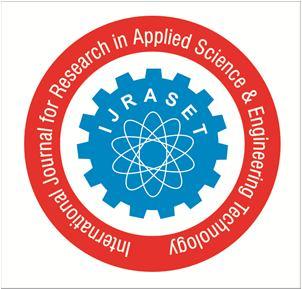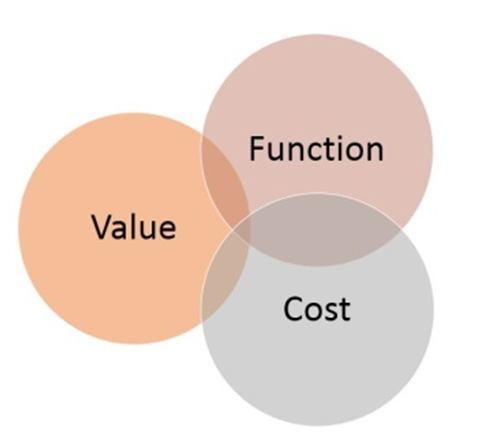https://doi.org/10.22214/ijraset.2023.49453

ISSN: 2321-9653; IC Value: 45.98; SJ Impact Factor: 7.538


Volume 11 Issue III Mar 2023- Available at www.ijraset.com

https://doi.org/10.22214/ijraset.2023.49453

ISSN: 2321-9653; IC Value: 45.98; SJ Impact Factor: 7.538


Volume 11 Issue III Mar 2023- Available at www.ijraset.com
B.E. (Mech), Chartered Engineer, PMP, VMA, Principal Partner at Strat-Edgy (An Engineering and Design Consultancy Firm)
Abstract: To India being one of the World’s fastest Growing Economy, the Micro, Small and Medium Enterprises (MSME) sector is a significant contributor. It is globally recognised that the MSME sector must be the growth engine of any economy, given its scale of operations. Even in India, this sector has consistently contributed to the growth of the economy. MSME sector needs to grow and strengthen so as to meet the needs of Multinational Corporations and large Corporates who are keen to develop key vendors capabilities so that the product and service offering of the vendors can be enhanced, and thereby enable them to move up the value chain.
VAVE has been widely implemented in the large-scale industries globally for more than 5 decades. The application of VAVE in India has had a significant impact on the country's manufacturing and construction industries, as well as in the field of public works and healthcare. By improving the value of goods and services, VAVE has helped to reduce costs and improve the overall quality of products and services. This has had a positive impact on the Indian economy and has helped to improve the standard of living for many Indians.

Value improvement, cost reduction and process optimisation being the key factors that impact the bottom lines as well as competitive advantage of MSMEs, this paper aims study the usefulness of VAVE for projects in the MSME sector.

The Micro, Small and Medium Enterprises (MSME) sector is a vibrant and dynamic sector of the Indian economy. This sector contributes significantly in the economic and social development of the country by fostering entrepreneurship and generating large employment opportunities at comparatively lower capital cost. MSMEs are complementary to large industries as ancillary units and this sector contributes significantly in the inclusive industrial development of the country. The MSMEs are widening their domain across sectors of the economy, producing diverse range of products and services to meet demands of domestic as well as global markets.
According to the Ministry of Micro, Small and Medium Enterprises, as of 2021:
1) The MSME sector in India employs around 111 million people.
2) The sector contributes around 29% to the country's GDP.
3) MSMEs account for around 45% of India's total exports.
4) Around 96% of the MSMEs are micro enterprises.
5) The MSME sector includes around 63 million units in the country.
ISSN: 2321-9653; IC Value: 45.98; SJ Impact Factor: 7.538

Volume 11 Issue III Mar 2023- Available at www.ijraset.com
It's important to note that the scenario of MSMEs in India is complex, it's affected by various factors such as the global economic scenario, the domestic scenario, political and legal environment and internal factors such as the management and operations. The government has been taking steps to ease the burden of compliance and improve the access to credit and technology to support the growth and development of the sector.
The MSME sector in India faces several challenges such as access to finance, lack of skilled labour, and lack of access to technology to list a few.
Despite the challenges, the MSME sector in India has significant potential for growth and development. The sector is expected to continue to contribute to the country's economic growth, employment generation, and export competitiveness. MSME play a pivotal role in providing employment for rural as well as urban populations in India. Strengthening every MSME unit will in turn contribute to strengthening a majority of population leading to growth of the Indian economy.
Micro, Small, and Medium Enterprises (MSMEs) in India offer a wide range of products and services to both domestic and global markets. Some of the main offerings of Indian MSMEs include:
1) Manufacturing
2) Services
3) Agricultural products
4) Handicrafts
A value chain refers to the full range of value-added activities which are required to bring a product from its conception, through design, sourcing raw materials and intermediate inputs, production, marketing, distribution and support to final consumer. It presents a ‘systemic perspective’ that incorporates all key activities related to the production, exchange, distribution, and after sales support for a given product or service.
Micro, Small, and Medium Enterprises (MSMEs) play a critical role in the value chain of a wide range of industries across all sectors, helping to create value for customers, build a strong market infrastructure, and support economic growth.
Key Inputs
1) Contracting Services
2) Distribution

3) Retail
4) Service Providers
In India, MSMEs are estimated to contribute around 45% of the country's total industrial output and employ around 120 million people.
In a producer-driven Value chain where the lead firm, often a large multinational manufacturer, plays a central role in coordinating a geographically distributed network of subsidiaries, vendors and suppliers. This type of chain tends to be characteristic of capital and technology-intensive industries such as automobiles, telecommunications, IT, and semiconductors. For an MSME to be a supplier to this type of Value chain requires a certain level of technical capabilities and sophistication, and associated investments. As an example, Tata Motors, expects very high standards on suppliers, requiring strong technological capabilities, flexibility in response, strong customer service orientation, and the capacity to work with its IT-based e-procurement system. MSME are definitely flexible in their approach being smaller in size, but there’s often a chance that these units fall short of the product quality or production capability or quickly adapting to design changes.

ISSN: 2321-9653; IC Value: 45.98; SJ Impact Factor: 7.538

Volume 11 Issue III Mar 2023- Available at www.ijraset.com
Similarly, a buyer-driven Value chain poses pretty challenging scenarios for a MSME unit to fulfil the demands of product & process specifications and standards of these large retailers, marketers and brand manufacturers. Examples of consumer goods company like Hindustan Unilever Ltd & e-commerce giant like Amazon.in that sources products like apparel, footwear, agroproducts, and consumer electronics from MSMEs.

IV. ADVANTAGES OF MSMES IN THE VALUE CHAIN
MSMEs possess several characteristics that make them well-suited for participating in value chains. These include:
1) Flexibility
2) Innovation
3) Local expertise
4) Strong relationships
5) Cost competitiveness
A. Challenges Faced by MSME

Some of the challenges and problems of MSME are:

1) Most of the MSMEs across different industries are not able to identify their competitive strengths within the value chain. Lack of time and resources to understand the market opportunities and to devise a market strategy pose a critical challenge. This leads to inability to define appropriate business model to gain or remain competitive.
2) MSMEs face a big hurdle with in availability managerial and financial resources necessary to innovate and upgrade their products or service offerings. MSMEs do not have the margins necessary to support R&D and training costs, which restricts their ability to grow further in the value chain. They face operational challenges due to insufficient working capitals due to delayed payments from their principals.
3) Cost of Quality poses a difficult challenge to the MSME unit as they have very thin margins to accommodate costs incurred due to rejections, repetition of work and frequent changes to the quality requirements.
4) MSMEs need frameworks that assist them to better manage their intellectual assets, including intellectual property rights and patents. Many a times they are unaware of the realisation of value from their innovations. At times they have to submit to disclosing their design innovations to fulfil the transparency requests from their customers. Due to lack of awareness and expert resources, MSMEs struggle with the overall management of intellectual assets
5) MSMEs are unaware of the overall picture of the Value Chain that they contribute to, one of the main reasons for this is inadequate managerial team and poor understanding of the market/sector.
ISSN: 2321-9653; IC Value: 45.98; SJ Impact Factor: 7.538


Volume 11 Issue III Mar 2023- Available at www.ijraset.com
Value Analysis and Value Engineering (VAVE) is well suited for finding applications in Micro, Small, and Medium Enterprises (MSMEs) because of its following characteristics:
1) Cost Optimization: VAVE aims to optimize the cost of a product or service while maintaining its quality and functionality. This is particularly important for MSMEs who operate with limited resources and have to find ways to reduce costs while ensuring profitability. VAVE helps to identify and eliminate waste in products, services, or processes, resulting in cost savings and improved profitability for MSMEs.
2) Focus on Value: VAVE takes a customer-focused approach to product design and development, and it helps to identify the most important features and functions that are of value to the customer. This helps MSMEs to better understand their customers' needs and develop products and services that are in line with their requirements.
3) Improving Efficiency: VAVE helps to optimize the use of resources, reduce production time, and improve the quality of products, services, and processes. This results in increased efficiency and improved competitiveness for MSMEs.
4) Multidisciplinary Team Approach: VAVE involves a multidisciplinary team of experts from various fields, such as engineering, marketing, and finance, who work together to find solutions that are both cost-effective and provide value to the customer. This approach is particularly beneficial for MSMEs who often lack the resources to hire experts in all fields and can benefit from the expertise and perspective of a multidisciplinary team.


5) Simplicity: VAVE is a simple and straightforward approach that can be easily adapted to suit the needs of MSMEs. It does not require extensive resources or specialized skills, making it accessible to MSMEs.
6) Continuous Improvement: VAVE is an ongoing process that encourages continuous improvement, and this is particularly important for MSMEs who need to continuously adapt and improve their offerings to stay competitive.
7) Flexibility: VAVE can be applied to a wide range of products, services, and processes, making it a flexible method for MSMEs to improve their offerings.
8) Customer Focus: VAVE emphasizes the importance of understanding customer needs and expectations, and making improvements to meet these needs. This customer-focused approach helps MSMEs to better understand their market and improve their offerings to remain competitive.
Overall, VAVE provides MSMEs with an effective and flexible approach to improving their products, services, and processes, resulting in cost savings, increased efficiency, and improved competitiveness in their markets.
ISSN: 2321-9653; IC Value: 45.98; SJ Impact Factor: 7.538

Volume 11 Issue III Mar 2023- Available at www.ijraset.com

1) Quick turnaround
2) Function Analysis

3) Multidisciplinary Team
The advantages of a multidisciplinary team deployed for a Value Analysis and Value Engineering (VAVE) project for a Micro, Small, and Medium Enterprise (MSME) are similar to those for any other organization. A multidisciplinary team can bring several benefits, including:

1) Broader Perspective: A multidisciplinary team brings together diverse perspectives and ideas, which can lead to a more comprehensive analysis of the problem and the development of innovative solutions.
2) Improved Decision-Making: By pooling together the knowledge and experience of different disciplines, the team can make better decisions, taking into account all the relevant factors.
3) Increased Buy-in: When stakeholders from different areas of the MSME are involved in the VAVE project, they are more likely to understand and support the changes that are proposed.

4) Improved Communication: With individuals from different disciplines working together, the team can communicate more effectively, reducing the risk of misunderstandings and miscommunication.

ISSN: 2321-9653; IC Value: 45.98; SJ Impact Factor: 7.538

Volume 11 Issue III Mar 2023- Available at www.ijraset.com
5) Increased Collaboration: By working together on a project, team members can build stronger working relationships and improve collaboration, which can benefit the MSME in the long-term.
6) Access to Expertise: MSMEs may not have in-house expertise in all the areas required to perform a VAVE project. A multidisciplinary team can provide access to this expertise, allowing the MSME to take advantage of the latest knowledge and techniques.
Overall, a multidisciplinary team brings a range of different skills, perspectives, and experiences to a VAVE project for an MSME, which can help to achieve better results and drive more successful outcomes for the organization.

The significance of the FAST diagram in MSME projects is that it helps to streamline and simplify the problem-solving process by breaking down a complex system into its individual components. This allows the MSME to focus on specific areas of improvement, leading to a more targeted and efficient approach to value analysis and improvement. Additionally, the use of a FAST diagram in MSME projects can also help to identify areas of the product or service that can be simplified, reducing costs and increasing overall efficiency.


In the context of MSMEs, it is often the case that resources are limited and the focus is on maximizing return on investment. The use of a FAST diagram can help to prioritize improvement projects based on their potential impact, enabling MSMEs to make the most of their limited resources.
Overall, the use of a FAST diagram in MSME projects can help to increase the competitiveness and profitability of the business, as well as improving the quality and reliability of their products or services.

ISSN: 2321-9653; IC Value: 45.98; SJ Impact Factor: 7.538

Volume 11 Issue III Mar 2023- Available at www.ijraset.com
By creating a visual representation of the flow of materials, information, and resources from the raw materials stage to the finished product, VSM enables MSMEs to identify areas of waste, such as excess inventory, unneeded steps in the production process, and inefficient use of resources. This information can then be used to develop strategies for reducing waste and streamlining the production process.
In a VAVE project for MSMEs, VSM can be particularly useful for understanding the interconnections between different stages of production, and for identifying areas where small changes can have a significant impact on overall efficiency. It can also help to engage all members of the organization in the VAVE process, by providing a clear and visual representation of the current process and the opportunities for improvement.
In summary, the significance of VSM in a VAVE project for MSMEs lies in its ability to help organizations optimize their value chain, reduce waste, and improve efficiency, which can lead to increased competitiveness and profitability.

VAVE projects in the MSME sector can be broadly categorized into two types: process improvement projects and product design and improvement projects.
1) Process improvement projects aim to streamline the manufacturing and delivery processes to reduce cost, increase efficiency, and improve customer satisfaction. These projects often involve analysing and optimizing the production process, identifying and eliminating waste, improving material and supply chain management, and automating manual processes.
2) Product design and improvement projects are focused on designing and improving existing or new products to increase their value proposition and competitiveness. These projects involve evaluating the product design and architecture, identifying opportunities for cost reduction, improving product functionality and quality, and exploring new product features. In both types of projects, the multidisciplinary team plays a crucial role in bringing together the expertise of different functional areas such as engineering, design, manufacturing, marketing, and finance to identify opportunities for value improvement and implement them in the most efficient and effective manner.
There are several types of process improvement projects that can be undertaken in the MSME sector using the Value Analysis and Value Engineering (VAVE) approach. Some of the common types of VAVE projects in the MSME sector include:
1) Lean Manufacturing: This involves applying Lean principles such as reducing waste, improving flow, and eliminating bottlenecks in the production process to increase efficiency and reduce cost.
2) Six Sigma: This is a data-driven approach that uses statistical methods to identify and eliminate defects and variability in the manufacturing process.
3) Total Quality Management (TQM): This involves a continuous improvement approach that aims to improve the overall quality of the production process through the identification and elimination of defects, standardization of processes, and the continuous improvement of processes and products.
4) Supply Chain Management: This involves optimizing the flow of materials and information from suppliers to the customer to reduce lead time, increase efficiency, and reduce costs.
5) Automation and Robotics: This involves the integration of automation and robotics into the production process to increase efficiency, reduce waste, and improve product quality.
The goal is to identify and eliminate waste, improve the efficiency and effectiveness of the production process, and enhance customer satisfaction.
Product design and improvement VAVE projects for MSMEs can include:
1) Cost reduction: Analysing the cost structure of a product and finding ways to reduce costs without sacrificing quality or performance.
2) Design for Manufacturability: Improving the design of a product to make it easier and more cost-effective to manufacture.
3) Design for Assembly: Improving the design of a product to make it easier and more efficient to assemble.
4) Design for Maintenance: Improving the design of a product to make it easier and more cost-effective to maintain.
5) Improved Functionality: Improving the functionality of a product to meet customer needs or to increase its competitiveness.

ISSN: 2321-9653; IC Value: 45.98; SJ Impact Factor: 7.538
Volume 11 Issue III Mar 2023- Available at www.ijraset.com
6) Product Simplification: Reducing the number of components, features, or complexity of a product to reduce costs and increase reliability.

7) Improved Reliability: Improving the reliability of a product to reduce warranty costs and increase customer satisfaction.
8) Improved Safety: Improving the safety features of a product to reduce the risk of injury or damage to the user or the product. In both product design and process improvement projects, the multidisciplinary team approach is key to the success of the VAVE project. By bringing together experts from different disciplines, including engineering, finance, marketing, and operations, the team can ensure that all aspects of the project are considered and optimized. The use of tools such as FAST diagrams, job plans, and value stream mapping can help to guide the team through the VAVE process and ensure that all relevant factors are taken into consideration.
[1] https://msme.gov.in/sites/default/files/MSMEENGLISHANNUALREPORT2021-22.pdf
[2] https://eepcvirtualexpo.com/image/MSME%20Knowledge%20Paper-Single-Web.pdf
[3] https://www.zeebiz.com/small-business/news-indian-msmes-have-manufacturing-cost-advantage-in-global-value-chain-176761
[4] Book: Value Engineering: Concepts, Techniques and Applications Paperback – 1 October 2003 by Anil Kumar Mukhopadhyay (Author)
